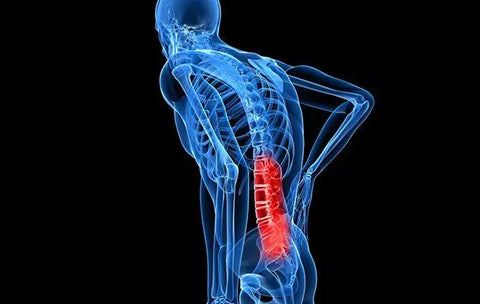How Do You Use A Foam Roller for Back Pain
Foam rollers have become a popular self-massage tool among fitness and wellness enthusiasts. These cylindrical-shaped foam rollers are used to relieve muscle soreness, stiffness, and improve flexibility. In recent years, foam rollers have been widely used to alleviate back pain, specifically the lower back. Lower back pain is a leading cause of disability worldwide, and foam rolling is an inexpensive and accessible way to ease back pain.
Foam rolling is a type of self-myofascial release (SMR) therapy. SMR is a technique that includes applying pressure on tight muscles and trigger points in the body. It helps in breaking up knots in fascia, the connective tissue that surrounds muscles. Foam rolling is a more affordable way to perform SMR therapy at home, as compared to getting a massage done by a professional. In this press release, we will discuss how foam rollers can be used to alleviate back pain and improve overall back health.

Using a foam roller to relieve back pain
Foam rolling is safe, effective, and simple to perform, making it an excellent choice for individuals dealing with lower back pain. However, it's essential to know how to use the foam roller correctly to relieve back pain. Here are some simple steps:
Step 1: Lie on your back
Lie on your back with knees bent and feet flat on the ground. Place the foam roller under your lower back, so it's perpendicular to your spine. Support your head with your hands and keep your elbows close to your sides.
Step 2: Roll over the foam roller
Slowly roll your body over the foam roller such that it massages your lower back. Roll from the base of your spine up to your mid-back, in a back-and-forth motion. Ensure that you are not rolling your lower back on the foam roller but rather your muscles.
Step 3: Focus on tight spots
When you reach a tight spot, hold the foam roller on that spot for 10-15 seconds to apply more pressure on it. You may feel some discomfort but never push yourself beyond your limits. Breathe deeply and exhale as you roll over any painful or tight areas.
Step 4: Move the foam roller to another area
Continue rolling over your lower back to your mid-back. Whenever you feel the need to move the foam roller to another area, replace it in the position that needs attention. For example, if you feel pain on one side of your lower back, move the foam roller to that side.
Step 5: Do it regularly
Foam rolling should be performed regularly for maximum benefit. A few minutes a day can go a long way in improving back health and reducing pain. It should be done in combination with other exercises such as stretching and strengthening exercises.
Other foam rolling exercises for back pain
In addition to the basic foam rolling exercise mentioned above, here are some other foam rolling exercises that you can do to alleviate lower back pain:
1. Thoracic spine extension
Lie on your back and place the foam roller under your shoulder blades. Raise your arms above your head and extend your chest.
2. Piriformis stretch
Sit on the foam roller with your knees bent, hands behind you for support. Cross one leg over the other, root your foot, and roll over the foam roller.
3. Glute stretch
Sit on the foam roller with your legs crossed, one foot resting on the opposite knee. Roll over the foam roller to loosen up your glutes.
4. Spinal twist
Sit on the foam roller and place it under your mid-back. Cross your arms over your chest, then twist your upper body left and right.
Conclusion
Foam rolling is an excellent way to alleviate lower back pain. By massaging your muscles, it reduces the tension on your spine, allowing it to relax. Developing a regular foam rolling routine can help improve your back health, mobility, and flexibility. As with any exercise, it's essential to listen to your body and avoid over-exerting or hurting yourself. If you are dealing with back pain, give foam rolling a try, and experience the benefits yourself!



